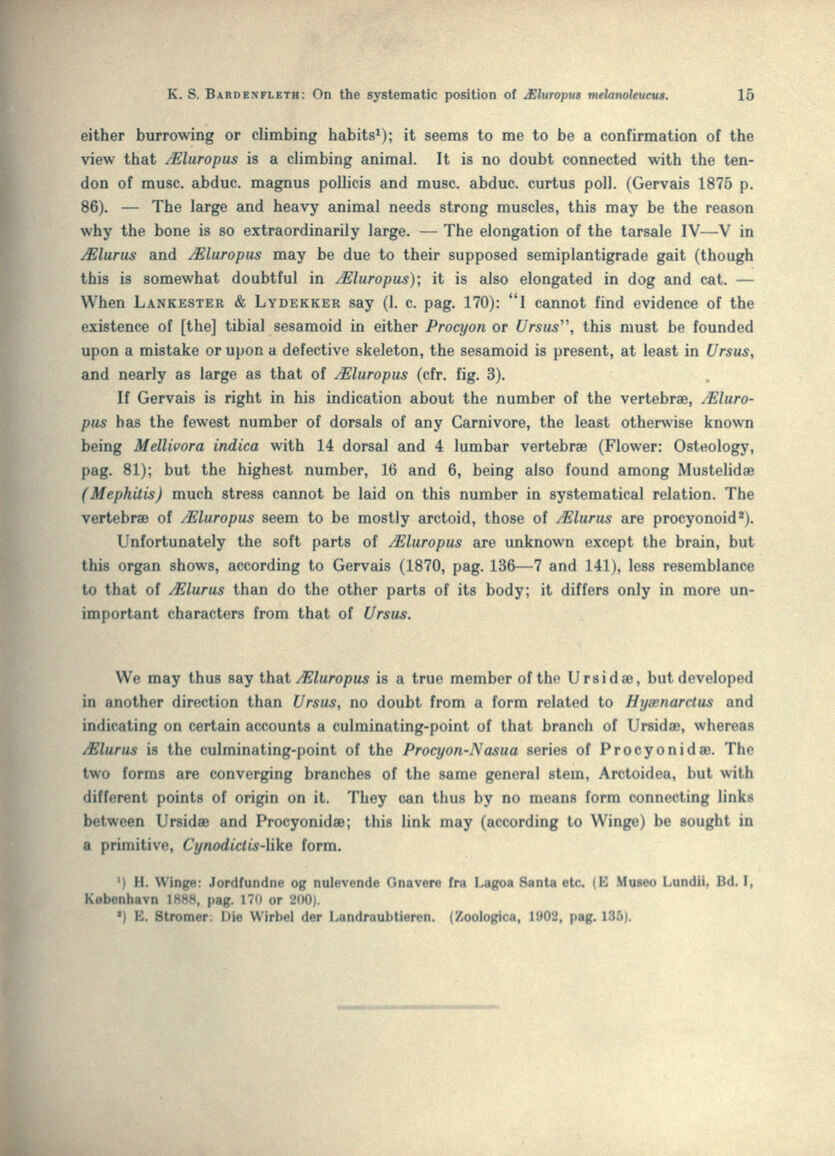
Full resolution (JPEG) - On this page / på denna sida - On the Systematic Position of Æluropus Melanoleucus

<< prev. page << föreg. sida << >> nästa sida >> next page >>
Below is the raw OCR text
from the above scanned image.
Do you see an error? Proofread the page now!
Här nedan syns maskintolkade texten från faksimilbilden ovan.
Ser du något fel? Korrekturläs sidan nu!
This page has been proofread at least once.
(diff)
(history)
Denna sida har korrekturlästs minst en gång.
(skillnad)
(historik)
either burrowing or climbing habits[1]; it seems to me to be a confirmation of the
view that Æluropus is a climbing animal. It is no doubt connected with the
tendon of musc. abduc. magnus pollicis and musc. abduc. curtus poll. (Gervais 1875 p.
86). — The large and heavy animal needs strong muscles, this may be the reason
why the bone is so extraordinarily large. — The elongation of the tarsale IV—V in
Ælurus and Æluropus may be due to their supposed semiplantigrade gait (though
this is somewhat doubtful in Æluropus); it is also elongated in dog and cat. —
When Lankester & Lydekker say (l. c. pag. 170): “I cannot find evidence of the
existence of [the] tibial sesamoid in either Procyon or Ursus”, this must be founded
upon a mistake or upon a defective skeleton, the sesamoid is present, at least in Ursus,
and nearly as large as that of Æluropus (cfr. fig. 3).
If Gervais is right in his indication about the number of the vertebræ,
Æluropus has the fewest number of dorsals of any Carnivore, the least otherwise known
being Mellivora indica with 14 dorsal and 4 lumbar vertebræ (Flower: Osteology,
pag. 81); but the highest number, 16 and 6, being also found among Mustelidæ
(Mephitis) much stress cannot be laid on this number in systematical relation. The
vertebræ of Æluropus seem to be mostly arctoid, those of Ælurus are procyonoid[2].
Unfortunately the soft parts of Æluropus are unknown except the brain, but
this organ shows, according to Gervais (1870, pag. 136—7 and 141), less resemblance
to that of Ælurus than do the other parts of its body; it differs only in more
unimportant characters from that of Ursus.
We may thus say that Æluropus is a true member of the Ursidæ, but developed
in another direction than Ursus, no doubt from a form related to Hyænarctus and
indicating on certain accounts a culminating-point of that branch of Ursidæ, whereas
Ælurus is the culminating-point of the Procyon-Nasua series of Procyonidæ. The
two forms are converging branches of the same general stem, Arctoidea, but with
different points of origin on it. They can thus by no means form connecting links
between Ursidæ and Procyonidæ; this link may (according to Winge) be sought in
a primitive, Cynodictis-like form.
<< prev. page << föreg. sida << >> nästa sida >> next page >>